We bet you can’t guess which country has the largest oil reserves in the world in 2017. There are currently around 1.70 trillion barrels of proven oil reserves and the 16 countries with the biggest oil reserves in the world in 2017 hold roughly 96% of all the oil in the world. Since oil is the single most important commodity, as it is responsible for around a third of global energy consumption, most countries with the biggest oil reserves rely heavily on it for their economic growth.
On the one hand, these countries’ oil reserves did them a lot of good, allowing them to benefit and to enjoy years of prosperity due to surging oil prices between 1999 and 2014. Then in 2014, oil prices slumped to as low as $30 per barrel from over $100 and many of these countries faced the unpleasant reality that they are too dependent on oil. According to the Organization of the Petroleum Exporting Countries, its 14 members had average GDP growth of 4.7% in 2012, but in 2015 and 2016, that growth slowed down to 1.3%. The same can be said about OPEC countries’ oil exports, which slid to $888.99 billion in 2016 from $1.67 trillion in 2012.
In countries like Iraq, Libya, and Venezuela, fuel exports represent over 97.7% of their total merchandise exports. Moreover, before the oil slump, in Iraq, Kuwait, and Saudi Arabia, oil rents (the difference between the value of crude production and costs) amassed over 45% of their Gross Domestic Products. In addition, given that oil is an exhaustible resource, some countries, like the wealthy Arab States of Saudi Arabia, Kuwait, and the UAE, have implemented strategies to develop other sectors of their economy in order to alleviate their dependence on oil. In other countries, this could be more challenging, especially due to military conflicts and an overall tense environment.

Copyright: 3dsculptor / 123RF Stock Photo
After oil prices slumped in 2014 and remained low in 2015, since the demand continued to be outweighed by supply, prices started to adjust in 2016, as OPEC countries agreed to cut their production of oil, while the demand grew in response to weaker prices. In 2016, oil consumption went up by 1.6 million barrels per day, or 1.6%, driven by increased consumption in China and India. However, oil production only grew by 0.4 million barrels per day, as the number of active rigs declined by 253 to 3,365 last year.
The 16 countries with the biggest oil reserves in the world in 2017 have attracted a lot of multinational companies engaged in oil exploration and production, as well as having their own companies that are among the world’s largest. For example, Saudi Arabia’s Aramco, which produces over 12 billion barrels of oil each day, is by far the largest company in the world, with revenue estimated at $1 billion per day. Exxon Mobil Corporation (NYSE:XOM) and BP plc (ADR) (NYSE:BP), which are among the 11 best oil company stocks to buy now, and which produce 5.3 billion and 4.1 billion barrels of oil respectively, have operations in many of these countries. Out of the list of 16 countries with the largest reserves, BP plc (ADR) (NYSE:BP) has operations in nine countries, while Exxon Mobil Corporation (NYSE:XOM) has operations in six.
With this in mind, let’s take a closer look at the 16 countries with the biggest oil reserves in the world in 2017 and how much their economies depend on oil production. The total amount of oil reserves was taken from the US Energy Information Administration. Their oil dependence will be represented by oil rents as a percentage of GDP, provided by the World Bank. Other data included in the article is provided by the OPEC Annual Statistical Bulletin 2017 and by BP Statistical Review of World Energy 2017.
16. Algeria
Proven Reserves (billions of barrels): 12.2
We start the countdown of the 16 countries with the biggest oil reserves in the world in 2017 with Algeria, which is the largest country in the OPEC in terms of territory. Its first commercial oil discovery was in 1956 and oil production began in 1958. The country exports around $18.64 billion worth of petroleum, which represents approximately 64% of its total exports. Algeria is the home country of Sonatrach, a government-owned company that is responsible for oil exploration and production. Sonatrach is the largest Algerian and African country, which accounts for 30% of the country’s Gross National Product and is the 12th-largest oil consortium in the world, with a production capacity of 2.7 million barrels per day. At the end of 2015, Algeria’s oil rents amounted to 1.9% of its GDP, significantly down from 18.8% in 2012.

Pixabay/Public Domain
15. Brazil
Proven Reserves (billions of barrels): 13
Brazil currently produces around 2.61 million barrels of oil per day, up by 3.2% on the year. However, because of its high levels of consumption, it doesn’t rely on energy imports very much. Last year, the company exported around 798,000 barrels per day, which is expected to grow in the following years, a trend that the government is very much looking forward to, as it is climbing out of a recession. Brazilian semi-public oil corporation Petroleo Brasileiro SA Petrobras (ADR) (NYSE:PBR) produced 2.14 million barrels per day in 2016, but targets production levels of 2.77 million bpd by 2021. Brazil’s oil rents amount to less than 1% of its GDP.

Thiago Leite/Shutterstock.com
14. Qatar
Proven Reserves (billions of barrels): 25.24
In 2010, oil rents amounted to 14% of Qatar’s GDP, which fell to 5.9% by 2015, World Bank data shows. The Middle Eastern country produced 1.90 million barrels of oil per day in 2016. Out of exports worth $72.46 billion in 2016, Qatar’s petroleum exports accounted for $22.96 billion. The country’s state-owned company Qatar Petroleum is responsible for all oil and gas activities and produces around 2.3 million barrels per day. Because it controls all oil and gas in the country, other companies have access to Qatar’s oil reserves through joint ventures with Qatar Petroleum. One of these companies is Exxon Mobil Corporation (NYSE:XOM), whose joint ventures with Qatar Petroleum amass 65,000 acres offshore, although they are engaged in the production of natural gas.
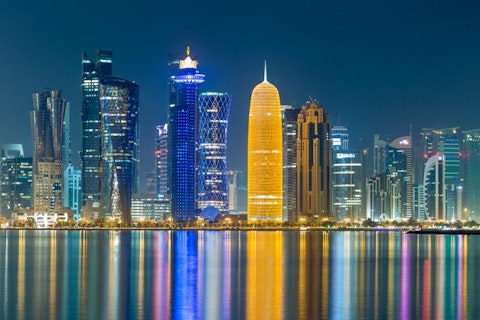
Shahin Olakara/Shutterstock.com
13. China
Proven Reserves (billions of barrels): 25.62
China ranks 13th in our list of 16 countries with the biggest oil reserves in the world in 2017. As the world’s second-largest economy, China is also the largest consumer of energy, with a total of 3.05 billion tonnes of oil equivalent, according to BP’s Statistical Review of World Energy 2017. Out of this amount, oil is the second most-consumed fuel, with consumption of 578.7 million tonnes, behind coal at 1.89 billion tonnes of oil equivalent. China consumes around 5.05 million of light distillates, 4.05 million of middle distillates, 617,000 of fuel oil, and 3.68 million of other products daily. At the same time, the country produces slightly less than 200 million tonnes of oil.
With such big appetites, it’s not surprising that China’s oil exports are basically non-existent and it imports around 9.21 million barrels daily, which account for 14.1% of global imports. China’s oil rents currently represent just 0.3% of its GDP. Among the 10 biggest oil and gas publicly-traded companies in the world, two are Chinese: PetroChina Company Limited (ADR) (NYSE:PTR) and China Petroleum & Chemical Corp (ADR) (NYSE:SNP), whose market caps amount to $207 and $103 billion, respectively.

Creativa Images/Shutterstock.com
12. Kazakhstan
Proven Reserves (billions of barrels): 30
Kazakhstan ranks 12th in our list of 16 countries with the biggest oil reserves in the world in 2017. Kazakhstan’s exports of fuel represent around 76% of its total merchandise exports. The country produces around 1.67 million barrels of oil per day, but its consumption amounts to just 287,000 barrels. According to OPEC, Kazakhstan has 57 active rigs as of 2016, the second-highest number in Eurasia behind Russia. Kazakhstan’s oil rents represented 5.6% of its GDP in 2015, down from 13.8% in 2010.
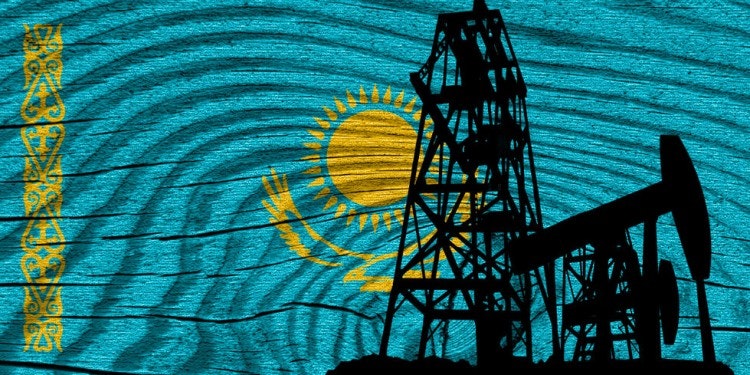
Copyright: argus456 / 123RF Stock Photo
11. Nigeria
Proven Reserves (billions of barrels): 37.06
Between 2010 and 2015, Nigeria’s oil rents as a percentage of GDP slid to 3% from 12.4%. The country produces 2.05 million barrels of oil per day and exported petroleum products worth $27.79 billion last year, which represented 80% of its total exports. Nigeria’s oil and gas sector represents around 35% of its GDP. The government controls Nigeria’s oil production through the Nigerian National Petroleum Corporation, which manages joint ventures between the government and multinationals.

Bill Kret/Shutterstock.com
10. United States
Proven Reserves (billions of barrels): 48
United States ranks 10th in our list of 16 countries with the biggest oil reserves in the world in 2017. The U.S is another major producer and consumer of oil and one of the 16 countries with the biggest oil reserves in the world in 2017. Even though it has some of the largest oil reserves and also produces 12.35 million barrels of oil per day, it consumes 19.63 million barrels of oil, with the rest being imported from other countries, like Canada, Mexico, Iraq, and Saudi Arabia. It’s the second-largest consumer of energy, with 2.27 billion tonnes of oil equivalent, of which oil represents 863.1 million barrels. Some of the largest oil and gas companies are U.S-based, including Exxon Mobil Corporation (NYSE:XOM), which has the largest market capitalization of all oil and gas companies at $339 billion, while Chevron Corporation (NYSE:CVX) is the third-largest, with a market cap of $222 billion.

Kanok Sulaiman/Shutterstock.com
9. Libya
Proven Reserves (billions of barrels): 48.36
Last year, Libya’s petroleum exports amounted to $9.31 billion, versus total exports of $11.99 billion. However, in the last couple of years, the country’s oil exports declined from $60.19 billion registered in 2012. The country has been an OPEC member since 1962. It produced 426,000 barrels of oil per day in 2016 and has 17 active rigs as of last year.
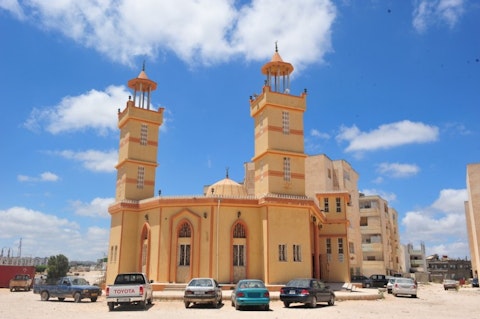
thomas koch / Shutterstock.com
8. Russia
Proven Reserves (billions of barrels): 80
Russia is the largest oil exporter in the world and one of the 16 countries with the biggest oil reserves in the world in 2017, with a total of 8.63 million barrels exported daily in 2016, which represented 13.2% of global oil exports. Most of its oil was exported to Europe and China. At the end of 2016, Russia’s oil rents represented 5.6% of its GDP, down from 9.5% in 2010. Rosneft is one of the largest oil producing companies in the world, with a capacity of 2.6 million barrels per day. Another one is Lukoil, which produces around 2.2 million barrels per day.

Romas_Photo/Shutterstock.com
7. United Arab Emirates
Proven Reserves (billions of barrels): 97.8
United Arab Emirates ranks 7th in our list of 16 countries with the biggest oil reserves in the world in 2017. The UAE exported 123.5 million tonnes of oil in 2016. The country’s petroleum exports amounted to $45.56 billion last year, which represented 15% of its total exports. Around 40% of United Arab Emirates’ GDP is dependent on oil and gas production. The country has become one of the most developed nations in the world due to its oil production and exports. In 2010, the UAE’s oil rents represented 20.2% of GDP, but by 2015, this number had declined to 11.2%.

Ashraf Jandali/Shutterstock.com
6. Kuwait
Proven Reserves (billions of barrels): 101.5
Kuwait ranks 6th in our list of 16 countries with the biggest oil reserves in the world in 2017. Kuwait is still very dependent on oil, with its oil rents as a percentage of GDP standing at 38.5% as of 2015, though lower than the 48% figure of five years earlier. Out of total exports of $46.26 billion in 2016, Kuwait’s petroleum exports accounted for $41.46 billion. Kuwait produces around 3.15 million barrels of oil per day. Kuwait Petroleum Corp is the country’s national oil company, and produces 3.2 million barrels of oil per day.
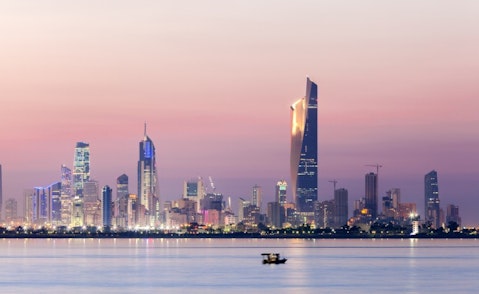
Philip Lange/Shutterstock.com
5. Iraq
Proven Reserves (billions of barrels): 142.50
Between 2010 and 2015, Iraq’s oil rents as a percentage of GDP declined to 38.5% from 48%. Oil is Iraq’s sole export item, whose value amounted to $43.75 billion, versus total exports of $43.89 billion. In 2016, Iraq produced 4.47 million barrels of oil daily. The Iraqi Oil Ministry accounts for the bulk of oil production, with a volume of 2.3 million barrels per day.

Frontpage/Shutterstock.com
4. Iran
Proven Reserves (billions of barrels): 158.4
Iran is also one of the 16 countries with the biggest oil reserves in the world in 2017. Out of total exports worth $97.39 billion, Iran’s oil exports represented around $41.12 billion in 2016. With its sanctions lifted, Iran registered an increase in production to 4.60 million barrels per day in 2016, from 3.82 million in 2012. Iran has a refinery capacity of 1.99 million barrels per day, which is the second-highest in the Middle East, behind Saudi Arabia. The National Iranian Oil Company is the country’s main state-controlled corporation, and produces around 4 million barrels of oil per day.

Borna_Mirahmadian/Shutterstock.com
3. Canada
Proven Reserves (billions of barrels): 169.71
Canada ranks 3rd in our list of 16 countries with the biggest oil reserves in the world in 2017. Canada’s consumption amounts to 2.34 million barrels per day, while its production stands at 4.46 million barrels. In this way, Canada is one of the largest exporters of oil, exporting 164.4 million tonnes of crude oil in 2016, with the bulk of it going to the U.S. Canada currently has 209 active rigs as of the end of 2016, up by 65 over the year.
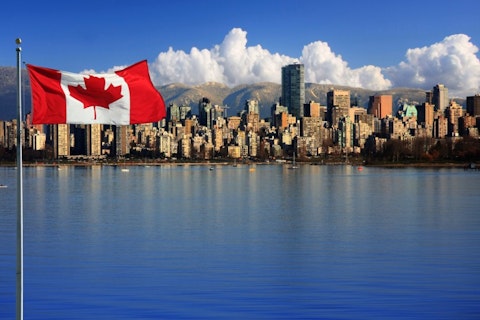
Hannamariah/Shuterstock.com
2. Saudi Arabia
Proven Reserves (billions of barrels): 266.46
Not only does Saudi Arabia have one of the largest oil reserves in the world, but its state-owned oil and gas company, Saudi Aramco, is the most valuable company in the world, with a market capitalization estimated between $8 trillion and $10 trillion. Saudi Aramco produces around 12 million barrels of oil per day and generates around $1 billion in revenue, according to estimates. The country exported $134.37 billion worth of petroleum in 2016. In volume terms, Saudi Arabia is the second-largest oil exporter, with 8.53 million barrels per day. At the same time, Saudi Arabia produced 12.35 million barrels of oil per day last year.
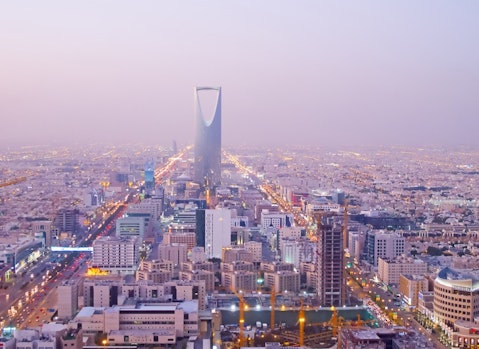
Fedor Selivanov/Shutterstock.com
1. Venezuela
Proven Reserves (billions of barrels): 300.88
Venezuela’s oil production slightly declined last year to 2.41 million barrels per day from 2.64 million barrels a year earlier and from 3.34 million barrels a decade ago. Out of total exports of $26.47 billion in 2016, petroleum exports represented $24.14 billion. The country’s oil and gas sector represents 25% of its GDP and its oil rents as a percentage of GDP stood at 14.2% in 2013.
The country’s government has been under a lot of pressure as the country’s oil dependence resulted in an economic collapse with the decline in oil prices. With thousands of people protesting against the government, and inflation that is expected to top 700% this year, as well as food shortages, the only thing keeping Venezuela from plunging into total chaos is its oil production. The country’s national oil company, Petróleos de Venezuela, S.A. (PDVSA), is facing technical difficulties at some of its refineries due to malfunctioning equipment and lack of spare parts, according to Reuters. Venezuela’s production declined by 8.9% to 2.41 million barrels per day in 2016 and is significantly down from 3.34 million barrels daily registered in 2006.

testing/Shutterstock.com
These are the 16 countries with the biggest oil reserves in the world in 2017. However, it’s most likely that they will continue to have the biggest reserves until all oil is gone. While many of these countries that produce and export a lot of oil don’t have oil rents that are all that high, their other economic activity is often limited to the extraction of natural gas and other minerals, which is why in many cases, they remain poor, have high levels of inequality and face a lot of other issues that either already are, or are going to hinder their economic development.
Disclosure: None





